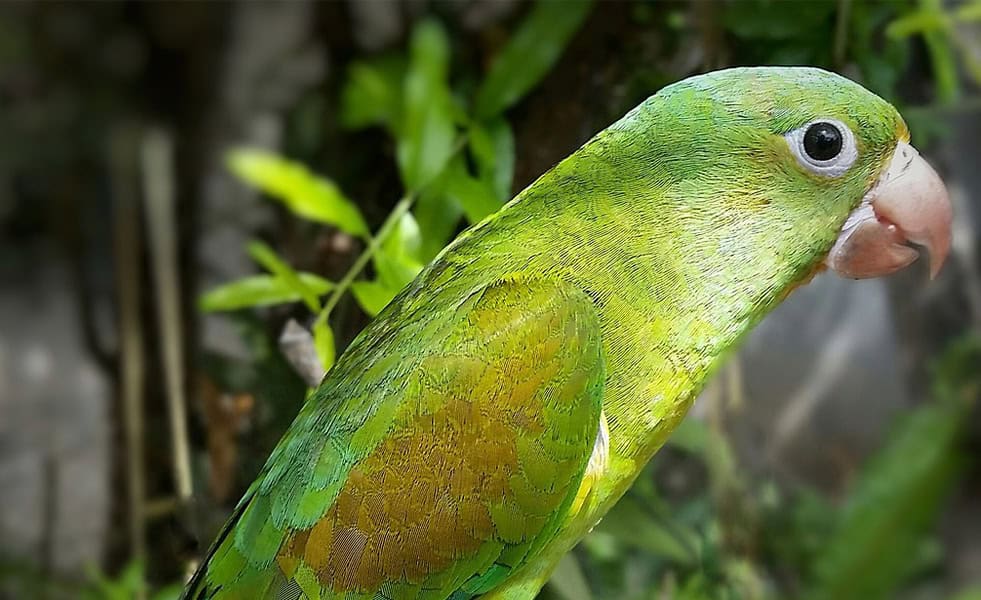In the area of Guanacaste where my family and I have lived for the last 12 years it is almost impossible to go through a day without hearing the shrill calls of orange-chinned parakeets. They’re so common that their presence and calls could be tuned out if you’re not paying attention.
A few days ago, one little parakeet demanded my attention by appearing before me in the middle of the road in need of some assistance. Within the next 24 hours, my son had named it Verde, it had bitten me at least ten times, slept over at my house in the spare bedroom, and rejoined its winged brethren in the wilds of Guanacaste. I’ll take this little interaction as a hint that the nature gods would like me to write my next article about orange-chinned parakeets.
Orange-chinned parakeets (Brotogeris jugularis) is specifically known as the periquito barbinaranja in Tico Spanish. In Guanacaste, it shares its territory with the orange-fronted parakeet (Aratinga canicularis) whose Spanish name is perico frentinaranja. For the most part, only bird people use those names and recognize the difference. To most of the folks living in Guanacaste, they’re both known as pericos or periquitos.
The orange-chinned parakeet is almost entirely green. It does have its namesake orange chin but sometimes it is difficult to observe in the wild. If you’re looking at one with binoculars, the two characteristics that tell you you’re looking at an orange-chinned parakeet are that it’s tiny and it has brown shoulders.
As I mentioned before, they are extremely common throughout Guanacaste and historically, it seems as though their population was mostly restricted to that region. One of my bird books says that the population expanded south over the decades as forests were cut. Now this tiny bird can be found screeching loudly throughout the lowlands on both sides of the country.
Orange-chinned parakeets prefer open country with scattered trees and forest edges where they fly around in flocks of up to 50 birds in search of small fruits, seeds, and flowers. Everything that these birds do involves making noise. They stay in contact during flight with their flock-mates with little tinkling calls.
They call out to other parakeets when they find a tree with plenty of fruit to eat. They also make a lot of noise when it’s time for bed in their roost tree. A bunch of shrill chattering just after sunrise signals to the group to it’s time to leave the roost tree and start looking for food.
I’ve never recorded orange-chinned parakeets with my camera traps. The closest I’ve gotten to recording them was when I located a nesting pair in a termite mound high in a tree. I climbed up there and placed a camera on a neighboring branch aimed perfectly at the entrance to their nest. A few weeks later, I retrieved the camera only to find that it had malfunctioned, recording nothing, and the pair had already moved out.
About the Author
Vincent Losasso, founder of Guanacaste Wildlife Monitoring, is a biologist who works with camera traps throughout Costa Rica. Learn more about his projects on facebook or instagram. You can also email him at: vincent@guanacastewildlifemonitoring.com






